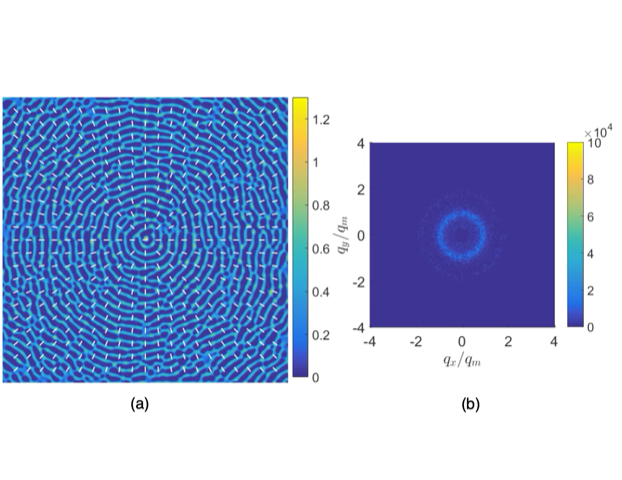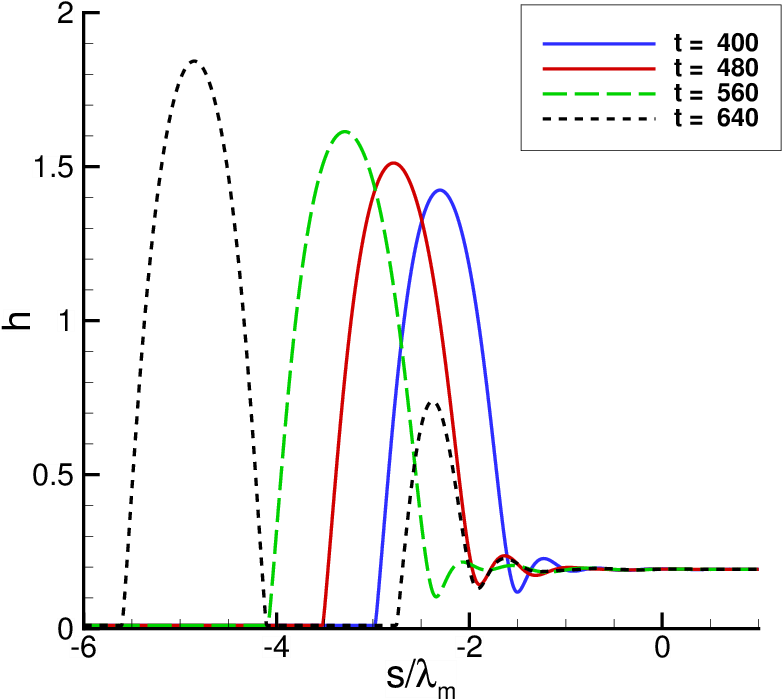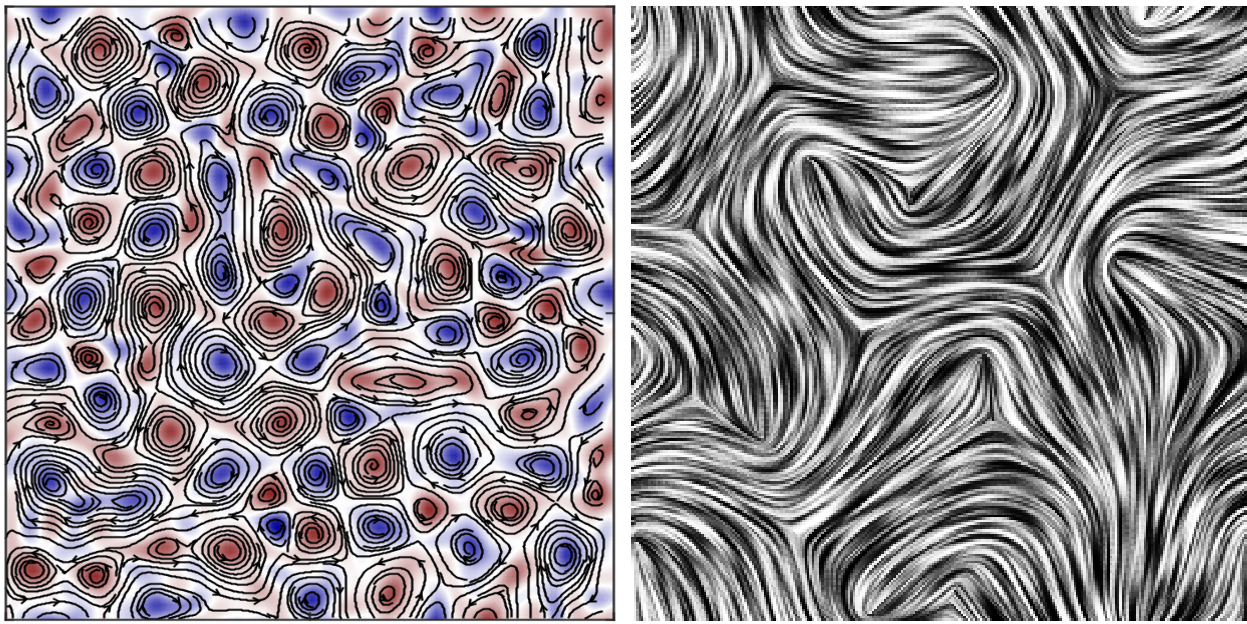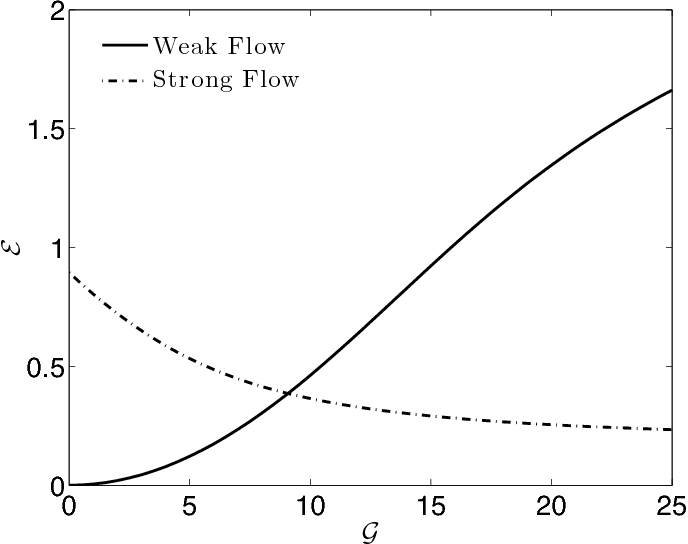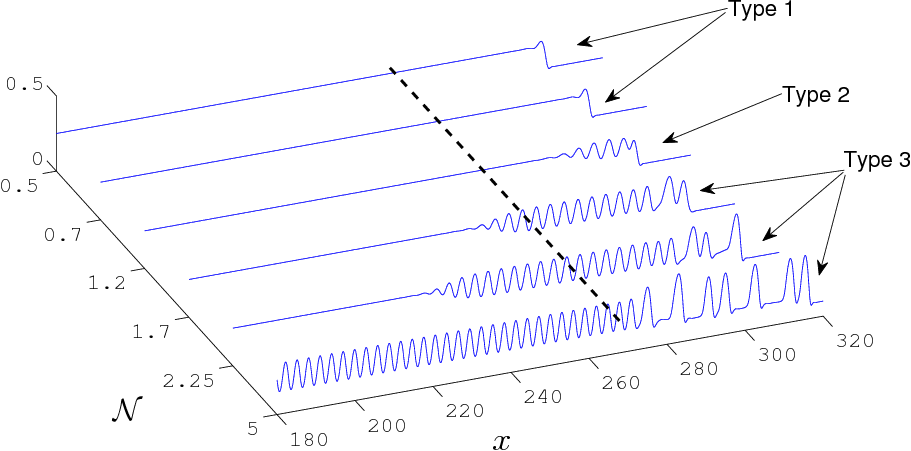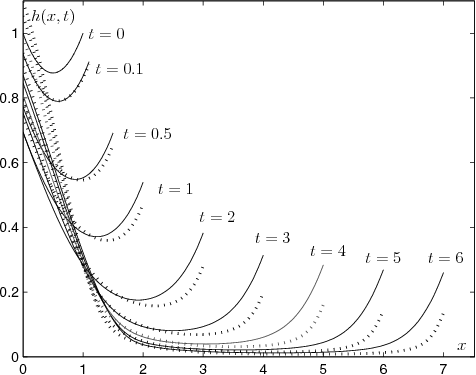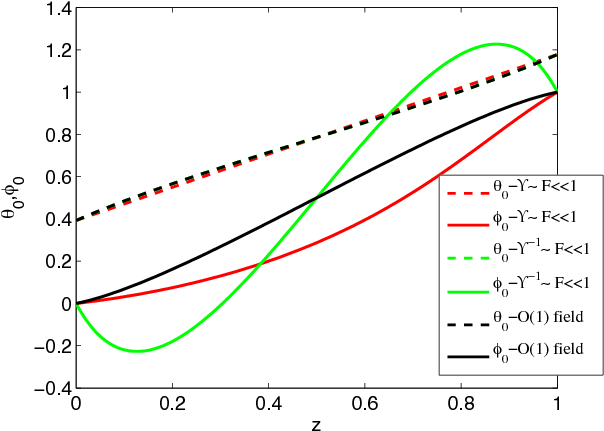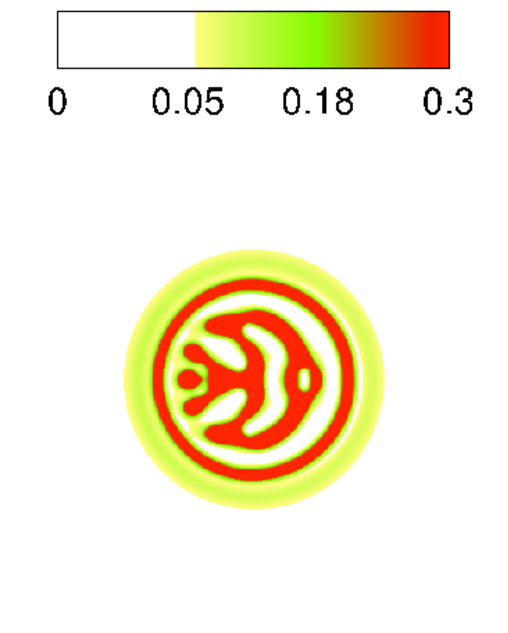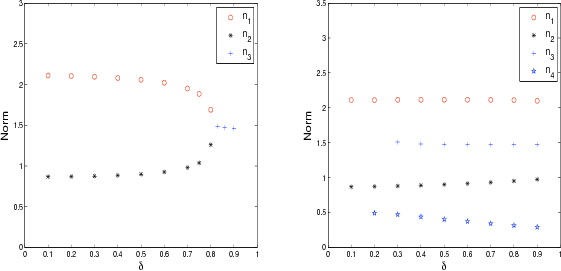Nematic Liquid Crystals (NLCs) find widespread industrial use in Liquid Crystal Display (LCD) devices, and so there is
considerable interest in furthering knowledge of how they behave, both within such devices, but also in situations where
they flow (e.g. spreading and coating flows). Under NSF funding (DMS 1815613) we are investigating various flow scenarios, with a focus on the molecular interactions between the NLC and the underlying substrate, and the behavior of NLC in the presence of nonuniform electric fields.
NLCs typically consist of polar, rod-like molecules which, due to electrostatic interactions, tend to align with their
neighbors. This imparts short-range orientational order to the material, giving some elastic character, and a viscosity
that depends on the direction of shear. In addition, the molecules also have a preferred orientation at a bounding surface,
a phenomenon known as anchoring (and the details of which depend on the interactions between the NLC and the surface, which
can be altered by suitable surface treatments). These features can be modeled by a director field for the NLC; a unit vector
field that represents the local average direction of the long axis of the molecules.
In our work we use the Leslie-Ericksen formulation: an energy equation, coupled to a momentum equation plus incompressibility
(analogous to the Navier-Stokes equations). The energy equation minimizes the net free energy of the NLC, comprising bulk and
surface contributions (the latter model the anchoring). In each of the problems we consider we exploit asymptotic simplifications,
due either to a small geometrical aspect ratio or to highly disparate timescales.
Our work on free surface flows has focused on so-called "thin film" spreading flow, where the height of a spreading film of NLC
is everywhere much smaller than typical lateral length scales. As the film flows, the molecular orientation of the NLC has to
adapt to the changing geometry. In most situations of interest, the timescale of spreading is much longer than that of the elastic
reorientation response of the molecules, which allows the energy equation to be decoupled from the flow momentum equation. A 4th
order nonlinear PDE for the free surface height may be derived, the stability properties of which depend strongly on the anchoring
conditions imposed at the underlying substrate and the free surface. Our work to date on this problem is described in our publications
below; ongoing efforts are focused on the influence of van der Waals' type interactions, relevant at very small length scales
(in so-called "ultra-thin" films); and on the effect of external forcing supplied, e.g., by an applied electric field.
Our work relevant to LCD devices has focused on (i) exploring the potential for bistable devices that operate with greatly reduced
power consumption relative to conventional LCDs; and (ii) formulating mathematical models to describe the phenomenon of director
gliding, which can occur when an NLC is adjacent to a polymeric bounding surface (such considerations may be important in the design
of flexible polymer-based display devices). LCDs rely on the birefringence principle; the ability of NLCs to rotate the plane of
polarized light, to an extent that depends on the molecular configuration. A pixel of a conventional LCD consists of a thin layer
of NLC sandwiched between parallel transparent plates (which act as electrodes). The sandwich is placed between crossed polarizers.
In the simplest scenario, the bounding electrodes can be treated to impart planar anchoring, such that the NLC molecules prefer to
lie parallel to the plates and in a specified direction. Choosing the top plate anchoring direction to be orthogonal to that of
the lower plate, the NLC molecules will then undergo a "twist" deformation across the layer in the absence of other forces. Light
passing through one polarizer will then enter the NLC layer as a polarized beam, and its plane of polarization will be rotated by
the layer so that it can pass through the second (crossed) polarizer, giving a bright pixel. However, when an electric field is
applied across the electrodes, the "twist" deformation of the NLC molecules is disrupted; the molecules instead align with the
electric field, perpendicular to the electrodes, and in this configuration cannot rotate the plane of the polarized light beam.
The light is then blocked by the second polarizer, giving a dark pixel.
Application of a field (or not) to individual pixels in a LCD can then be used as the basis for creating contrast in a display.
This is energetically expensive however, since contrast can be maintained only by sustained application of an electric field.
There is thus industrial interest in designing "bistable" devices: NLC sandwiches that, by suitable treatment of the bounding
plates (to tune the anchoring conditions) allow them to sustain two stable steady states in the absence of an applied electric
field (in the scenario outlined above, the simple "twisted" state is the unique field-free state). A display could then retain
its configuration without any applied power, with power required only to switch the display to a new state. Finding anchoring
conditions that permit bistability of pixels is not difficult; more challenging is to find bistable scenarios that allow for
reversible switching between the two stable states (via transient application of an electric field). Our work on bistable LCDs
has focused on determining "optimal" anchoring conditions on the bounding plates that allow for bistability, with maximal optical
contrast between the two states, and with reversible, fast, switching between the states, at moderate applied fields (to minimize
power consumption).
The "director gliding" phenomenon referred to above occurs when a layer of NLC is adjacent to a polymeric bounding surface, with
some bulk force (due, e.g. to an electric field) applied to the molecules of the NLC causing them to be pulled away from the preferred
anchoring orientation (the so-called "easy axis" associated with the anchoring) at the polymeric boundary. Due to the interactions
between the NLC molecules and those of the polymeric bounding surface, such a force exerts a torque on the polymer molecules, which
can lead to a slow reorientation of the easy axis. The anchoring properties of the surface can thus change slowly in time, with
potential consequences for the optical properties of a polymer-based display. We have derived mathematical models (described in our
publications) to represent such dynamic "gliding" behavior. Current efforts are focused on obtaining quantitative agreement with
experimental data.

